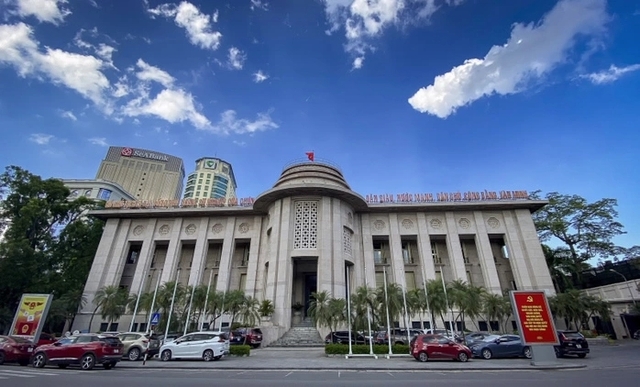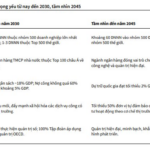
Illustrative image
The trading session on August 5 witnessed notable developments in the currency market as the State Bank of Vietnam (SBV) simultaneously lowered the secured lending interest rate for repurchase agreements (OMO) and bill issuance rates.
Specifically, the central bank lent nearly VND13,669 billion to seven banks through the OMO channel with a term of seven days and an interest rate of 4.25%/year. Compared to the previous session, the SBV’s OMO lending volume doubled, while the interest rate decreased by 0.25 percentage points, from 4.5%/year to 4.25%/year.
This is the first time the SBV has cut the OMO rate since late 2023. Previously, the central bank had adjusted this rate twice in mid-April and May 2024, increasing it from 4% to 4.25% and then to 4.5%.
Also, during this session, the SBV issued bills worth VND3,250 billion with a term of 14 days, and the winning interest rate decreased from 4.5%/year in the previous session to 4.25%/year.

Source: SBV
Analysts believe that the reduction in OMO and bill issuance rates indicates the SBV’s orientation to support the banking system’s liquidity and establish a lower interbank interest rate level in the future. This move is also considered appropriate as pressure on exchange rates has been easing.
As of the end of July 2024, the USD exchange rate in the free market dropped to VND25,630 per USD, causing the Vietnamese dong to depreciate by only about 3.68% compared to the beginning of the year. At the end of June, the free market exchange rate had lost 4.9%. By August 5, the buying and selling rates in the free market were VND25,600 – VND25,700/USD.
Most commercial banks have also lowered their selling rates below the SBV’s intervention ceiling of VND25,450/USD.
Previously, after absorbing a large amount of excess liquidity, the SBV continued to issue new bills in recent months with gradually increasing interest rates, reaching 4.5%, equal to the OMO rate. At the same time, the SBV also raised the OMO rate to 4.5% in mid-May.
The simultaneous use of bills and OMO is aimed at achieving the dual goal of ensuring liquidity for the banking system to maintain low interest rates in the market and reducing pressure on exchange rates by narrowing the interest rate differential between USD and VND in the interbank market.
In addition to measures affecting the interest rate differential, the SBV has also intervened by selling foreign currencies to increase the supply of USD in the market since late April. According to informed sources in the interbank market, the amount of foreign currency the SBV has sold to commercial banks has reached $6.4 billion.
With the pressure on exchange rates easing, the SBV’s reduction in OMO and bill issuance rates will help support the banking system’s liquidity and contribute to cooling interbank interest rates.
“With a high probability of exchange rate and inflation cooling down by the end of the year, the State Bank of Vietnam will have more room to loosen and maintain interest rates at a reasonable level to support domestic businesses in their recovery,” said Shinhan Securities Vietnam in a recent macroeconomic report.
Mr. Ngo Dang Khoa (HSBC): Exchange rate under pressure in Q1, expected to stabilize around 24,400 dong/USD by end of 2024
Prior to the rising trend of the USD, Mr. Ngo Dang Khoa – Director of Foreign Exchange, Capital Markets and Securities Services, HSBC Vietnam, has shared some insights and forecasts regarding the upward momentum of the USD and exchange rates.

















